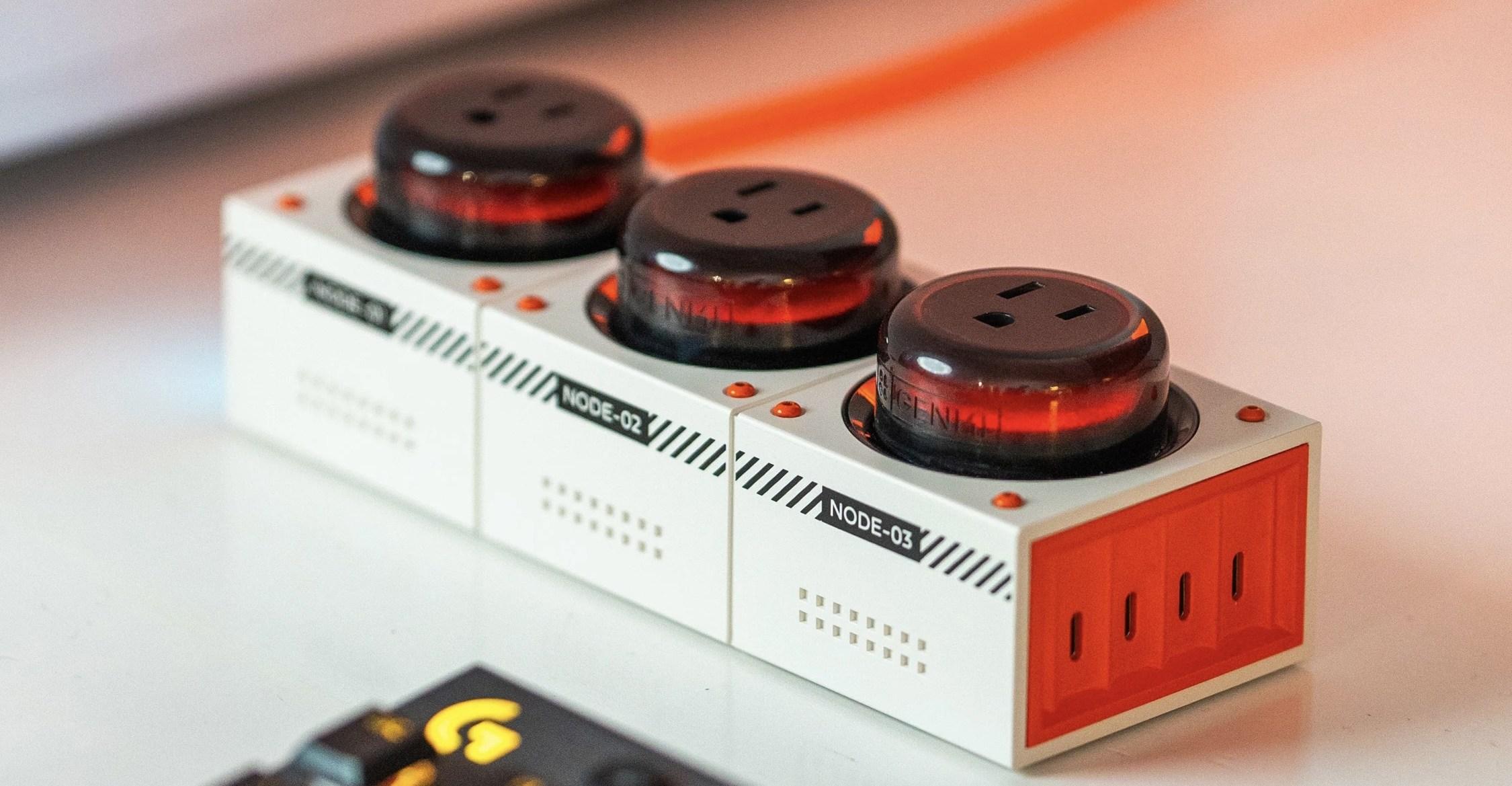Why the Pentagon wants to build thousands of easily replaceable, AI-enabled drones
Ukraine’s drone innovations have changed how the US is planning for a war with China.


It’s hard to overstate the level of hype currently surrounding military drones. Just in the past week, former senior US military commanders have penned commentaries comparing drones, in terms of their revolutionary potential, to the development of the phalanx formation that helped make Alexander the Great’s conquest possible, and suggesting they may make the US Air Force obsolete.
It’s not hard to understand why. The ongoing war in Ukraine has seen drones transform from a bespoke counterterrorism tool — one largely controlled by the US and its allies — into a ubiquitous feature of the modern battlefield.
Russian drones have rained down death on cities and destroyed energy infrastructure across Ukraine, inflicting serious pain on the civilian population. Ukrainian drones have made much of the Black Sea a no-go zone for Russia’s navy — despite the fact that Ukraine has virtually no navy of its own — and in recent days, drones have been able to reach deep into Russian territory.
On the front lines, surveillance drones are used as spotters for artillery, making such weapons far more effective and likely contributing to a stalemate, one where neither side is able to maneuver or take advantage of the element of surprise.
In the Middle East, US forces have seen their once unassailable air superiority undermined by an array of non-state armed groups, while Hamas has been able to use extraordinarily cheap drones to deadly effect, overwhelming Israel’s high-tech air defenses, including during the October 7 attack.
Not surprisingly, the Pentagon is looking to learn lessons from these battlefields, particularly as it eyes a potential future conflict with China. But while technological advances from the longbow to the atom bomb have changed the nature of warfare — just as war has driven technological innovation — what distinguishes the new age of drone warfare from previous military innovations is how it will play out. With drones, the military with the advantage isn’t necessarily the one with the most advanced or most powerful weapons, but the one that has these new weapons en masse and can quickly build and replace them.
The Iranian-made Shahed drones that Russia has been raining down on Ukrainian cities and that recently killed three US troops in an Iran-backed militia attack in Jordan can cost as little as $20,000 each — or about one four-thousandth the cost of a single F-35 joint strike fighter. Ukrainian forces have even been adapting $400 commercial racing drones to strike Russian forces.
These drones aren’t anywhere near as accurate or powerful as manned aircraft or high-end military drones like the US’s Reaper, which costs about $32 million — but they don’t need to be. If one is lost, it’s just not that big a deal. The result is that drones can be a kind of leveler for materially disadvantaged forces, whether they be the Houthi rebels disrupting the global trading system or Ukraine’s beleaguered defenders coping with shortfalls in artillery supplies.
All of that is bad news for the US military, which has long relied on sheer technological superiority. In response, the Pentagon is taking an “if you can’t beat them, join them” approach, launching an ambitious plan called Replicator to build thousands of cheap, replaceable — or “attritable,” in the Pentagon’s lexicon — drones, all in anticipation of a potential superpower conflict with China.
Advocates see the initiative not just as a new weapon but as a fundamental transformation of how America’s military equips itself for the wars of the future. Yet even the staunchest Replicator boosters concede that doing so will require a wholesale change in mindset for one of the US government’s most entrenched bureaucracies, one complicated by the fact that it’s all supposed to happen very, very fast.
The rise of Replicator
Last August, Deputy Secretary of Defense Kathleen Hicks announced the launch of Replicator with the goal of fielding “attritable autonomous systems at scale of multiple thousands, in multiple domains, within the next 18-to-24 months.” Hicks was very clear on these weapons’ intended target: the world’s largest military by manpower.
“Replicator is meant to help us overcome the PRC’s biggest advantage, which is mass,” she said, referring to the People’s Republic of China. “More ships. More missiles. More people.” We don’t know exactly how these drones will operate, but it’s likely they could form coordinated swarms to counter China’s advantages in mass and proximity to a future battlefield.
The stakes could hardly be higher. “The purpose of Replicator is to deter a conflict with the PRC, and if forced to fight, to have the capabilities we need to do so,” Aditi Kumar, a deputy director at the Pentagon’s Silicon Valley-based Defense Innovation Unit (DIU), told Vox.
We are now nearly seven months into Hicks’s timeline and the public still doesn’t have a good idea of what these systems will look like or who will be building them. According to the Department of Defense, there are around half a billion dollars for Replicator in its fiscal year 2024 budget — though Congress being Congress, that budget has still not been passed, and the department has been funded through a series of stopgap funding bills — and another half billion in its just-released fiscal year 2025 budget.
That’s pretty modest within the Pentagon’s $850 billion budget request. Kumar told Vox that an initial list of systems has been approved and that the department has contracts “ready to execute” as soon as it receives procurement funding from Congress.
The name “Replicator” refers to the fact that the department hopes the procedures used to fast-track the program can be “replicated” across the department. But as a number of the initial articles greeting Hicks’s announcement pointed out, it’s also sure to remind any Star Trek: The Next Generation fan of the devices used by the Enterprise crew to conjure anything up to “tea, Earl Grey, hot” out of thin air.
This Replicator won’t be quite that fast, but Kumar said a lesson the DIU has gained from conversations with Ukrainian operators is that modern drone warfare not only requires large numbers of systems, but that those systems have to be adaptable to a rapidly changing environment. In Ukraine, for instance, the drone war often comes down to a race to adapt the machines to the other side’s electronic countermeasures and jamming systems.
“Basically every 90 days, the environment completely changes,” Kumar said, referring to lessons learned from the Ukrainian operators. “Whatever capabilities they are fielding, countermeasures developed for those and so they have to keep staying ahead of the curve.”
:no_upscale()/cdn.vox-cdn.com/uploads/chorus_asset/file/25348311/2071910469.jpg)
The robots are coming
Fielding fleets of drones at this scale is also likely to speed up the military’s adoption of artificial intelligence. “The only way that thousands of drones work is if you have some measure of autonomy in the drones,” said Paul Scharre, a former Defense Department official now with the Center for a New American Security (CNAS). “Because they have thousands of systems of control, then you would need thousands of people operating them, and that’s a big personnel cost for the military.”
Both sides in the Ukraine war claim to be using artificial intelligence to improve their drones’ performance. So far, any use has probably been limited, but the war has also accelerated development of these capabilities. Ukraine’s influential digital transformation minister, Mykhailo Fedorov, has described fully autonomous killer drones as a “logical and inevitable next step” in military innovation.
Scharre is among the scholars raising concerns about the risks that an autonomous weapon could inadvertently trigger an international crisis by taking some risky action that a human in the loop might have decided against. (Another worry is that the speed of future conflicts and the pace of AI innovation may create pressure to take humans out of the loop.) He told Vox that autonomous weapons systems are more difficult to test than other applications of AI, such as self-driving cars, because of the difficulty of simulating the conditions under which they will be used. “You won’t get feedback on how something works until the war happened,” he said.
The issue is on policymakers’ agenda. Just this past week, the US hosted an inaugural meeting of a working group of governments focused on the responsible use of military AI.
Regardless, the age of AI aircraft is likely coming fast. The Air Force is also pursuing a separate program to develop so-called collaborative combat aircraft, or “robot wingman” drones: highly autonomous drones that will fly alongside crewed aircraft. Pentagon officials have described that program as “complementary” to Replicator.
Made in America
Building these drones on Hicks’s timeline sounds ambitious enough, but that’s just the beginning.
“Replicator is about fielding multiple thousands of autonomous systems by 2025, and that’s the metric we will be measured by in terms of success or failure,” said a senior Pentagon official authorized to speak with Vox on condition of anonymity. “But more important is the department’s culture change, in getting us to use our authority in a more creative way to accelerate delivery to the warfighter.”
Replicator takes aim at an outmoded Pentagon acquisitions and development process that has caused the average time for the development of US weapons systems, from research and development to deployment, to roughly quadruple since the 1970s.
And while the US has slowed down, potential adversaries have sped up. In 2018, Michael Griffin, then undersecretary of defense for research and engineering, estimated that it takes the US roughly 16 years to deliver a new idea to operational capacity, versus fewer than seven for China.
William Greenwalt, a former deputy undersecretary of defense for industrial policy now at the American Enterprise Institute, blames these delays on a culture of “systems analysis run amok” — the insistence on exhaustive testing and analysis for new systems. It’s “the greatest jobs program the Pentagon has ever developed,” he told Vox. “And as long as you don’t have a near peer competitor, you can have a jobs program.”
That’s no longer the case, given China’s rapidly rising capabilities and the country’s own investments in drones and autonomous systems. The senior Pentagon official acknowledged that the department had to find ways to get new systems from idea to operation, and that this would mean building “a culture where it’s okay to take acceptable risks, not irresponsible risks, but acceptable risks.”
Greenwalt predicted that the biggest technical challenge to Replicator will not be aerodynamics, range, or software, but manufacturing. Consider that it’s projected to take until 2025 for the US to ramp up production of 155-millimeter artillery ammunition — a system that hasn’t been altered that much since the early 20th century — to meet Ukraine’s battlefield needs. Replicator, a far more complex and completely new system, one that hasn’t even gone into production yet, is supposedly going to be built on a much faster timeline.
Adding to the headaches is the fact that the US commercial drone sector lags behind China’s, where Chinese companies like DJI dominate the market for the types of technologies that could be adapted for dual use. Ukraine’s forces have been celebrated for adapting these off-the-shelf systems for military purposes, and Kyiv now buys about 60 percent of the world’s supply of DJI’s popular Mavic quadcopter. But that’s obviously not an option for the US when China itself is the anticipated adversary.
Still, Greenwalt is cautiously excited about the level of ambition involved. “Can we basically adopt a manufacturing capability from scratch with new technology? That, I think, is the real revolutionary potential of Replicator.”
What Ukraine can’t teach us
As futuristic as Replicator may sound, there’s still a risk that the US is simply fighting the last war. Stacie Pettyjohn, director of the defense program at CNAS and author of a recent study of drone innovation in the war in Ukraine, questions the degree to which the lessons of that war — one where small, less capable, but easily replaceable drones have played a major role — would be applicable to combat in the Pacific with China.
“The geography and the distances involved in the Pacific theater are so much greater than in Ukraine, and the type of drones that the United States would employ need to have more range and endurance because they’re likely to be based at least several hundred miles away at the closest and probably much farther than that,” Pettyjohn told Vox. “So unless the United States is going to be pre-positioning drones on Taiwan, it’s going to need a different class of system.”
Pettyjohn worries that given the strict timelines established for Replicator, “the type of drones that it is going to end up producing are not going to be a lot of the ones that would be helpful.”
Pentagon officials declined to comment on the specific operational needs for Replicator but Kumar acknowledged that, “We are dealing with a very different environment, an amphibious environment. And that presents a different set of concepts of operations and targets [than Ukraine].”
Automatic weapons
The main advantage of drones, of course, is that they decrease the risks to human troops. “It does allow us to have fewer people in the line of fire by replicating what our soldiers, sailors, airmen, marines, and guardians do very well,” the Pentagon senior official said.
The shift to a great emphasis on autonomous systems comes at a time when the military is scaling back on its human manpower. In February, the Army announced it was cutting the size of its force by 24,000 — around 5 percent — mainly by not filling already empty posts. The move is part of a deliberate restructuring as the Army shifts away from its post-9/11 focus on counterterrorism, with deep cuts to special operations forces and more staff for drones, air defense, and cyber capabilities. It also comes as the Army has been consistently missing its recruiting goals.
A potential war with China is likely to involve greater numbers of troops in combat, and greater casualties, than the US has seen in decades. It’s possible that in the future, robots may be able to make up, to some extent, for human manpower in wars like these. We can only hope we won’t have to find out.

Analogue is restocking its 4K N64 and making it more colorful
- 2 hours ago

The Verge subscription turns one
- 2 hours ago

Skateboarding is better in hell
- 2 hours ago

Meta could axe up to one-third of its ‘metaverse’ budget next year
- 17 hours ago

AI ‘creators’ might just crash the influencer economy
- 2 hours ago

Genki’s colorful, powerful power strip is 25 percent off
- 2 hours ago

Govt does not believe in using NAB for political vendetta: PM Shehbaz
- 9 hours ago

President confers Nishan-e-Pakistan on Indonesian President
- 8 hours ago
UK deports Pakistani YouTuber Rajab Butt
- 11 hours ago

Pakistan, Indonesia reaffirm to further strengthen cooperation in all areas of mutual interest
- 12 hours ago

Indonesian President,Field Marshal discuss regional security
- 12 hours ago

OpenAI says it’s disabled ad-like app promotions in ChatGPT
- 2 hours ago









